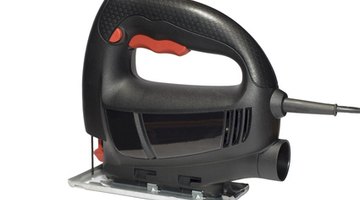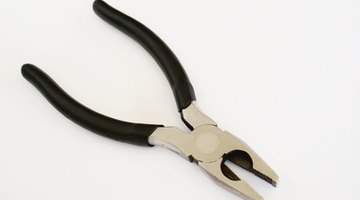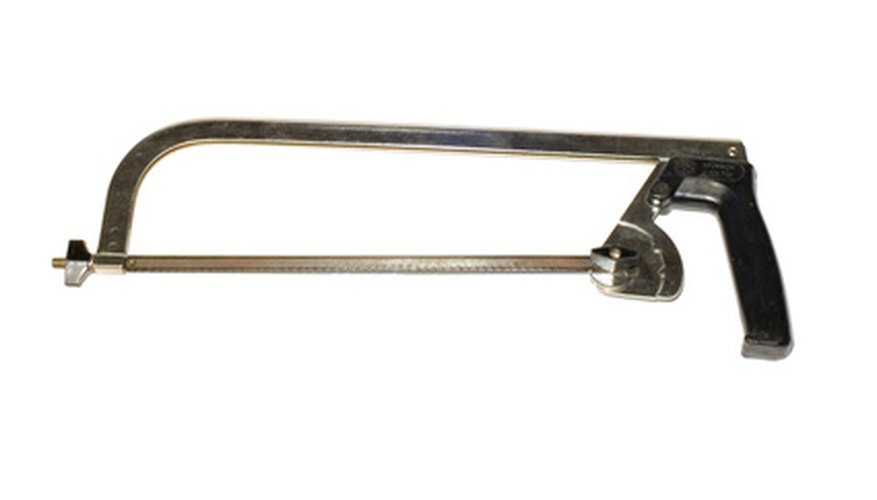During remodelling projects or when dismantling a wooden structure, it may be necessary to cut through nails or screws, particularly if the wood is to be reused or salvaged. If a worker is confronted by a partially driven ribbed nail, it's much faster to cut off the exposed portion than to attempt removal of the entire nail shank. There are a variety of tools which can be used to cut through nails or screws.
Reciprocating Saws
A reciprocating saw is an ideal tool when cutting off nails or screws in tight places. Equipped with a metal cutting blade, it will shear through most fasteners in seconds. Some have power cords, others are cordless, making them an ideal choice when working in remote locations where power might not be available. Reciprocating saws are manufactured by a large number of companies and can be purchased at most hardware and home improvement centres.
- A reciprocating saw is an ideal tool when cutting off nails or screws in tight places.
Jigsaws

Another type of power cutting saw is the jigsaw. It is smaller than a reciprocating saw, making it better suited for use in very confined spaces. It is also lighter and easier for the operator to control. Equipped with a metal cutting blade, it can easily shear the heads from common nails if you are fashioning a new set of scoring pegs for your cribbage board, for instance. Jigsaws are also available in corded and cordless models.
- Another type of power cutting saw is the jigsaw.
- It is smaller than a reciprocating saw, making it better suited for use in very confined spaces.
Hacksaws
Not all nail- and screw-cutting tools are powered. Hand-held hacksaws and mini-hacks are also handy for cutting small quantities of fasteners. The hacksaw has a frame with the blade supported at both ends. A mini-hack holds one end of the blade in a slot in the handle and a clamp secures it farther up. For working in really tight places, or where precision is critical, it's hard to beat the utility of a mini-hack.
- Not all nail- and screw-cutting tools are powered.
- A mini-hack holds one end of the blade in a slot in the handle and a clamp secures it farther up.
Lineman's Pliers and Cutting Pliers

For persons with a strong grip, lineman's pliers and cutting pliers can be used to cut off the head of a bent nail or screw. Like the mini-hacksaw, they are particularly useful if you're working in an extremely confined space, or only need to cut one or two nails or screws. In the right hands, either tool can make short work of a nail as large as a 16d (16 penny) size.
Bolt Cutters
If you are attempting to cut off a dock spike (a 100 penny nail) which might have a shank diameter of 5/8 inch, you may need to enlist a set of bolt cutters. Equipped with hardened steel jaws, and handles as long as 4 feet, they are capable of slicing through nails, screws or bolts. Nails of this size are usually used in heavy timber construction such as covered bridges or timber frame homes.
